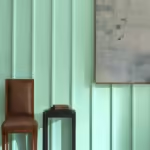Introduction to Julie Green and her work
Julie Green is a name that resonates deeply within the contemporary art scene. Known for her thought-provoking work, she has captivated audiences with pieces that challenge our understanding of justice and humanity. With an artistic journey rooted in personal experiences and social issues, Julie Green’s creations extend far beyond mere aesthetics; they carry powerful messages about life, death, and everything in between. As we delve into her world, we discover an artist who not only paints but also inspires conversations around some of society’s most pressing topics. Join us as we explore the multifaceted life and impactful projects of this remarkable artist.
Early Life and Inspiration for Her Art
Julie Green was born in 1961, a small-town girl with big dreams. Growing up in an artistic family, she was surrounded by creativity from an early age. Her parents encouraged her to explore different mediums, sparking a lifelong passion for art.
As a child, she often wandered through local galleries and museums. These experiences left lasting impressions on her budding imagination. The vivid colors and intricate details captivated her spirit.
Her college years further shaped Julie’s perspective. She studied at the University of Oregon, where she honed her skills and developed unique techniques that would define her later works.
Inspired by personal stories and societal issues, Julie began to seek out deeper meanings within everyday life. This desire to connect emotions with visual expression became the backbone of her artistry—and laid the groundwork for future impactful projects that resonated far beyond canvas boundaries.
The Unforgettable Project: Bringing Attention to Death Row Inmates
Julie Green’s Unforgettable Project is a profound exploration of life, death, and justice. Through her poignant series titled “The Last Supper,” she paints the final meals requested by death row inmates. Each plate serves as a canvas that captures not just food but stories and emotions.
Green meticulously researches each inmate’s case, ensuring their narratives are heard. The paintings are vibrant yet haunting, inviting viewers to reflect on the humanity behind the statistics.
This project transcends traditional art forms; it becomes an act of advocacy. By showcasing these last meals, Green challenges societal perceptions about capital punishment and its implications.
Her work draws attention to individuals often forgotten in discussions about justice—those facing imminent execution. Each piece compels audiences to consider moral complexities surrounding life and death in today’s world.
Other Notable Projects and Exhibitions
Julie Green’s artistic journey extends far beyond her acclaimed work on death row inmates. She has consistently explored themes of justice, humanity, and the complexities of life through various mediums.
One significant project is “The Painted Prison.” This series features vibrant plates adorned with imagery related to incarceration. Each piece reflects personal stories and experiences that resonate deeply with viewers.
Her exhibitions often challenge societal norms. In galleries across the country, she invites audiences to engage in conversations about morality and compassion.
Green’s participation in group shows also highlights her collaborative spirit. These events foster dialogue among diverse artists, creating a rich tapestry of perspectives within the art community.
Through these efforts, Julie Green amplifies voices that are often marginalized. Her commitment to social issues remains at the forefront of her creative expression.
Impact on the Art World
Julie Green’s work has left an indelible mark on the contemporary art scene. By merging social commentary with artistic expression, she challenges viewers to confront uncomfortable truths about justice and humanity.
Her most notable project, which features hand-painted plates depicting the last meals of death row inmates, elevates personal stories into a broader discussion about capital punishment. This approach not only resonates emotionally but also encourages dialogue among diverse audiences.
Green’s innovative techniques have inspired countless artists to explore themes of morality and ethics in their own practices. Her ability to blend craftsmanship with poignant narratives sets a new standard for socially engaged art.
Moreover, her exhibitions often spark conversations that extend beyond gallery walls. They invite reflection on societal issues while pushing boundaries within traditional art forms. Through this engagement, Julie Green continues to reshape perceptions and provoke thought within the art community.
Criticism and Controversies Surrounding Green’s Work
Julie Green’s work often ignites strong reactions. While many celebrate her as a voice for the voiceless, others question the morality of her subject matter.
Critics argue that focusing on death row inmates can trivialize serious issues surrounding justice and punishment. They worry it might overshadow important discussions about systemic flaws in the legal system.
Some art enthusiasts find her approach overly sentimental. They believe it risks reducing complex stories to mere aesthetics, which could dilute their impact.
Additionally, there are debates regarding appropriation of trauma. Is it appropriate for an artist to depict such painful experiences? This tension continues to provoke dialogue among audiences and fellow artists alike.
Despite these controversies, Green remains undeterred. Her commitment to highlighting human stories keeps her work relevant and thought-provoking in a world eager for change.
Conclusion: Julie Green’s Legacy and Continued Influence
Julie Green’s work has left an indelible mark on both the art world and society at large. Her unique approach to storytelling through ceramics invites viewers to confront difficult truths about justice, mortality, and humanity. By bringing attention to death row inmates through her unforgettable project, she has sparked conversations that extend far beyond the gallery walls.
Her ability to blend artistry with activism resonates deeply in an age where social issues demand our focus. Each piece serves as a poignant reminder of those often forgotten by society, urging us all to reflect on matters of life and death.
Green continues to inspire emerging artists who seek purpose in their work. Her legacy is not just in the beautiful plates or exhibitions but also in her commitment to using art as a vehicle for change. As we navigate complex societal challenges, Julie Green’s influence will undoubtedly endure—shaping future dialogues around justice, compassion, and creativity for years to come.





